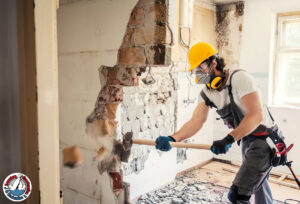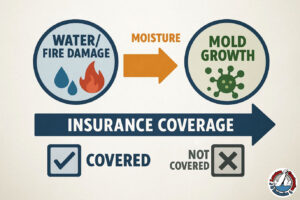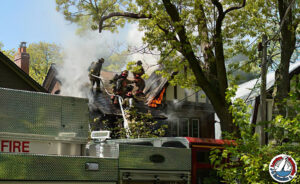A Guide to Surviving the Storm
A major storm can easily create a life-threatening situation, so it’s always wise to respect Mother Nature’s immense power. Here are some basic storm survival tips.
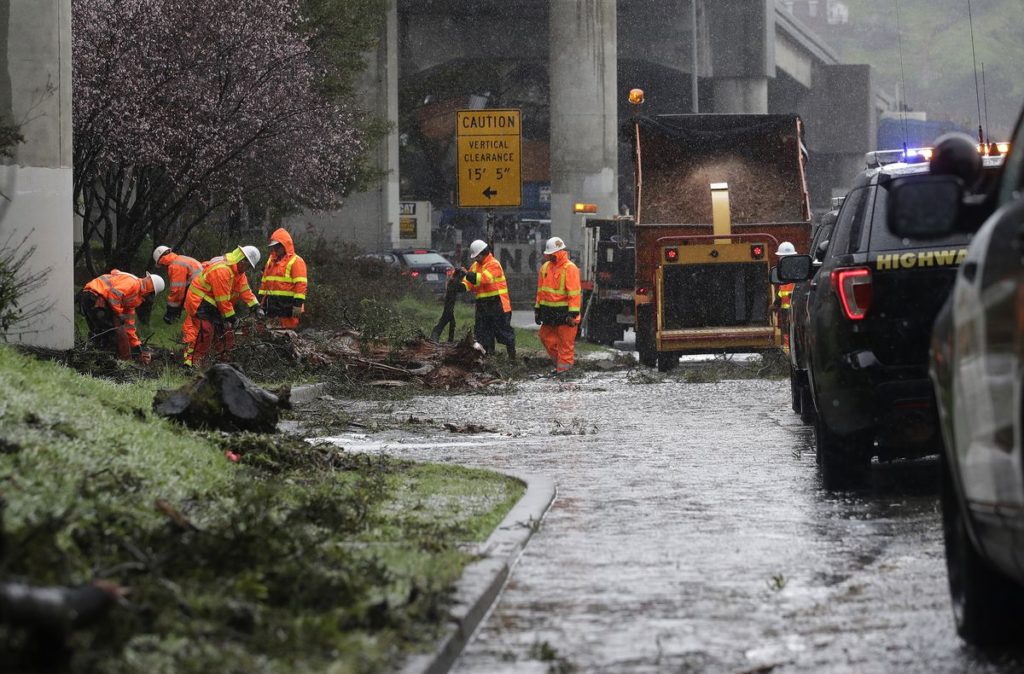
In most places, powerful storms happen only rarely. This is good news, of course, because a powerful storm can do incredible damage and can endanger human life. If there is any kind of major storm forecast to move through your area in the near future, starting to make a plan to stay safe is an essential activity.
This article is going to provide some basic information on how you can stay safe and make it through some of the scary storms that Mother Nature can conjure up. Of course, in addition to taking some pieces of advice from this article, you should always follow the instructions provided by local authorities both before and during a storm. Officials in your area will be staying up to date with the storm and will be able to provide the most accurate, relevant information.
Types of Dangerous Storms
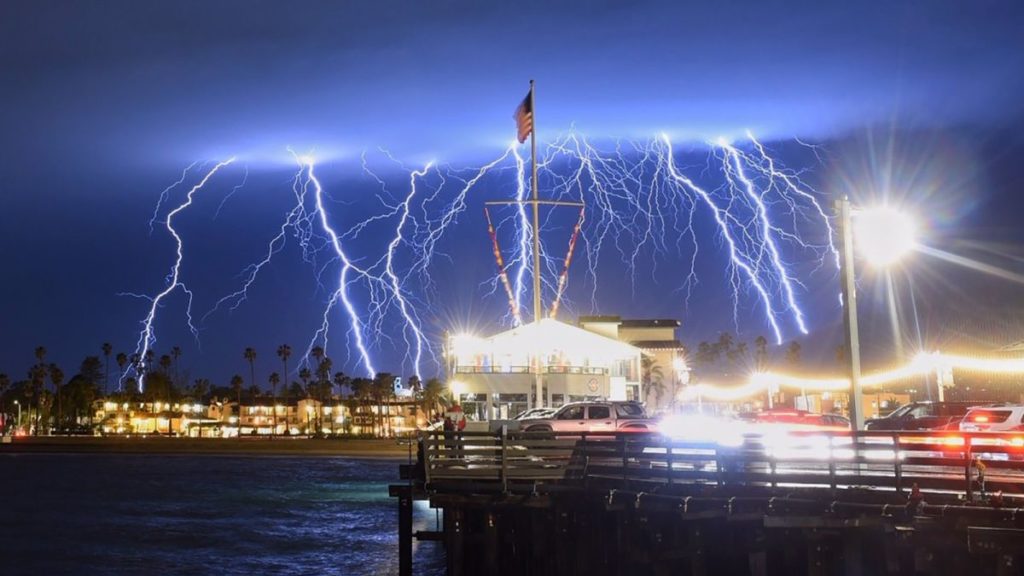
There are many different types of storms that can create dangerous situations. The actual level of danger presented by the storm is going to be directly related to the severity of that storm. Again, this is why it’s so important to pay attention to warnings by local authorities – they will be able to tell you what the forecast expects and what actions you should take.
The list below quickly highlights ten types of storms that can present a significant danger.
- Derecho storm. A derecho is a thunderstorm band that moves extremely quickly and brings powerful wind blowing in one specific direction.
- Flooding. Floods can occur for a variety of reasons, including a sudden downpour of rain or rapidly melting mountain snow.
- Hailstorms. The power that a hailstorm can unleash is not only dangerous for buildings and property – heavy hail can harm people and animals, as well.
- Snowstorms. Light snow can be a beautiful event, but a heavy snowstorm is another thing entirely. Heavy snow can strand drivers, make it impossible to get out for supplies, and cause roofs to collapse.
- Hurricanes. A hurricane is one of the most powerful types of storms that occurs on earth. Cities in areas that are frequently threatened by hurricanes always need to be prepared for such a scary event.
- Ice storms. A long-lasting ice storm has the potential to lock down an entire city, as a coating of ice around the town will make it nearly impossible to do anything.
- Lightning. The power of lightning is obvious, and a lightning strike can easily be a fatal event.
- Thunderstorms. Thunder and lightning often come together, and these kinds of storms can also bring dangerous amounts of rain.
- Tornadoes. Few storms can have the sudden, unpredictable impact of a major tornado. With incredible windspeeds and the potential to touch down just about anywhere in the storm area, tornadoes are always a scary proposition.
- Tropical storms. While a tropical storm is a less powerful version of a hurricane, that doesn’t mean it should be taken for granted. These are still dangerous storms with the potential to do significant damage.
How to Survive During a Storm
The types of storms you are likely to encounter in your area depends entirely on where you live. With that said, the general strategy for dealing with dangerous storm events is the same for most types of weather. Let’s look at some tips that are organized by where you happen to find yourself during the storm.
If You Are Indoors

It might seem like being indoors would be the safest option to get through a storm, but that doesn’t mean you are completely protected from danger. As a starting point, you’ll want to get away from the windows in the building just in case they happen to break. The best place to hide out during the storm is likely near interior walls. If you are worried about items falling off walls or the ceiling, look for a strong table to hide under.
To reduce fire risk, consider turning off the electricity and gas to the building in advance of the storm’s arrival. While it might be tempting, resist the urge to go outside and see how things look or what the storm is doing to nearby buildings – such a move could put you in danger. Find the safest, sturdiest part of the interior of the building and simply wait it out from there.
If You Are on the Street
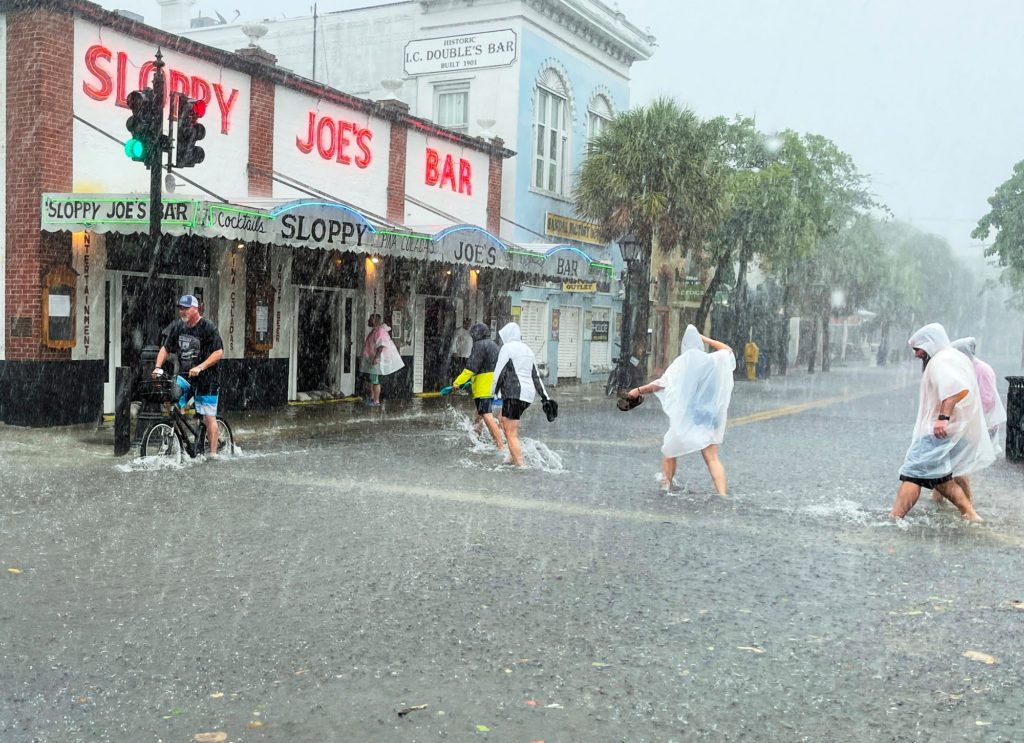
As you might imagine, being out on the street during a storm can be an incredibly dangerous situation. Your best bet is to avoid being in this situation at all – so plan ahead, when possible. However, if you find yourself out on the street without warning when a storm arrives, keep these tips in mind –
- Get away from anything that looks like it could be blown down or fall down
- Find something solid and sturdy to use as protection from flying debris
- If possible, seek shelter in a strong building, or even under an overpass
- Try to avoid continuing to wander around – find a spot that feels safe and let the storm pass
If You Are in an Open Area
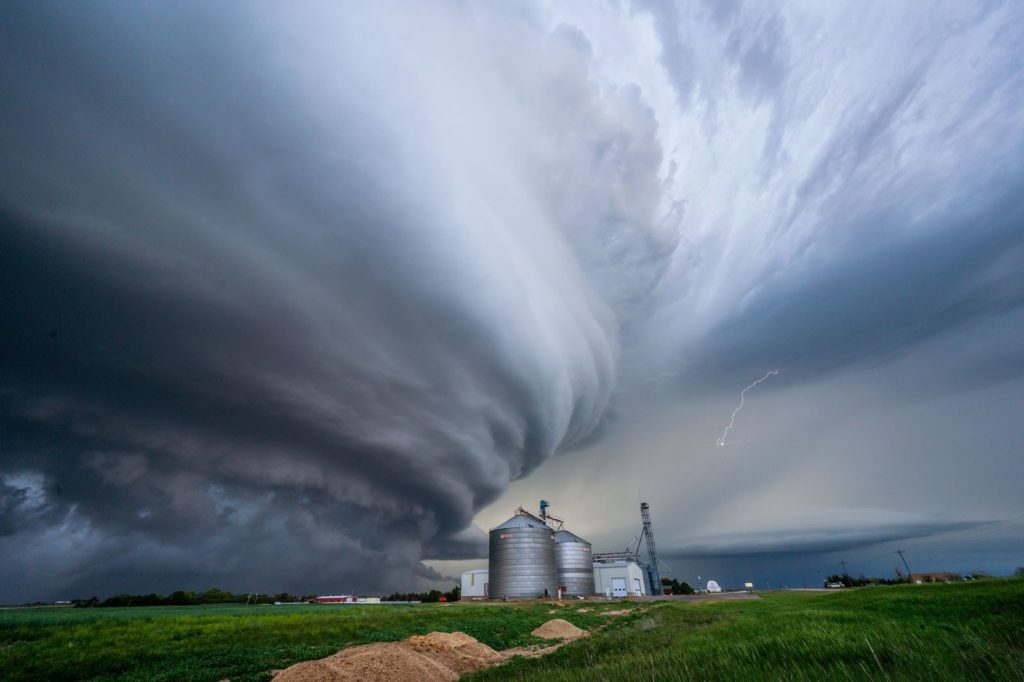
An open area could be out in a field at a park, or even out on a farm if you live in a rural location. You’ll feel exposed in this kind of setting, but don’t take shelter under a single tree – branches off that tree, or the whole tree, could come down.
Instead, look for a low spot in the land where you can hide. This could be a ravine or just an area where the ground is a little lower than most of the surrounding terrain. Also, it’s important to avoid any temptation to swim away from danger. Swimming in stormwaters is extremely dangerous, as you don’t know if the water has any live power lines that have been downed as part of the event.
If You Are in a Car
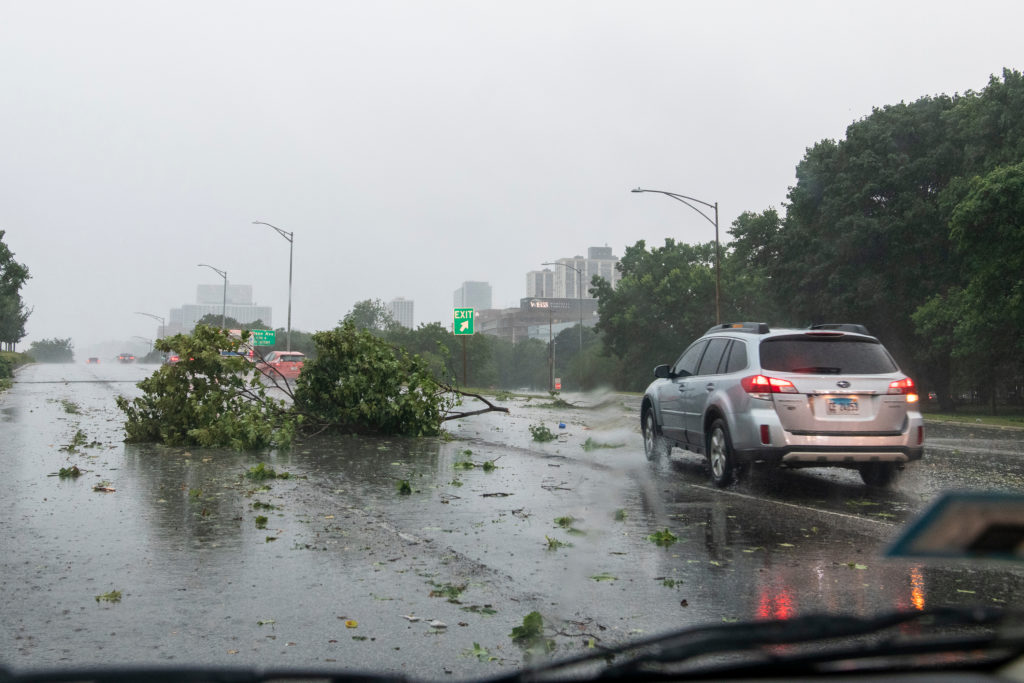
Being inside of a car is probably better than being out in the elements – at least, in most storm situations. However, you don’t want to keep driving through the storm, as that could put you in a dangerous situation quite quickly. Find a safe spot to park and let the storm pass through the area. Do your best to park away from anything that could be knocked down by the storm, such as power lines, billboards, and even buildings.
What to Do When the Storm is Over
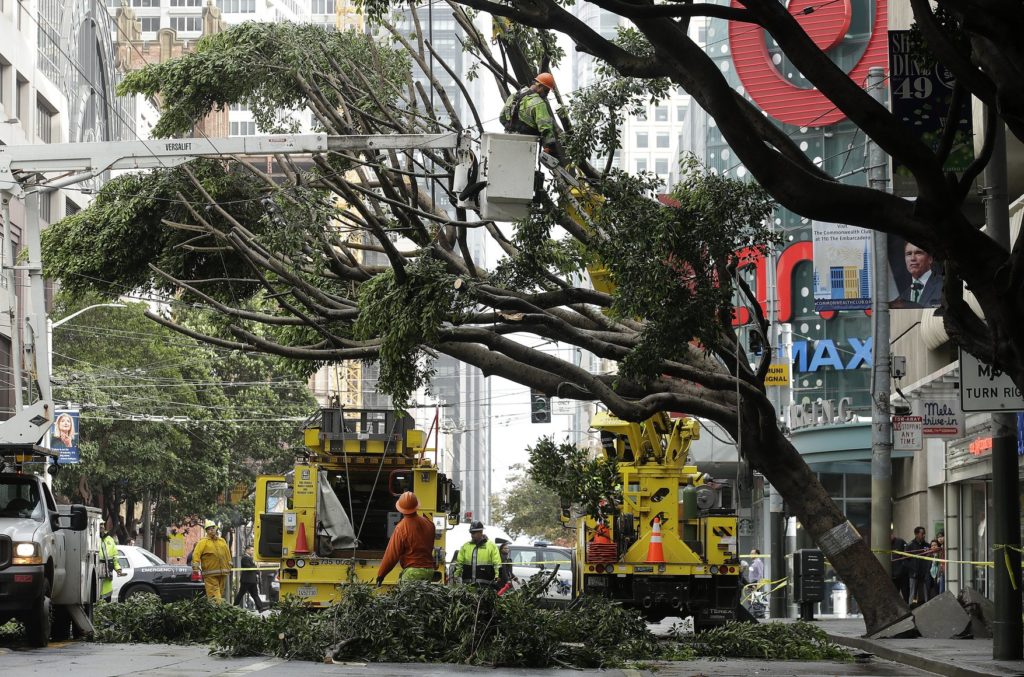
When the storm ends, you will likely feel a tremendous sense of relief. With that said, don’t go rushing out into the elements to check things out – the storm might not actually be over. It’s possible that there is a lull in the storm and that more dangerous conditions are still to come. Try to find information from local authorities so you know when the threat has officially passed.
Once you determine that it is safe to go outside, don’t touch anything that could be electrified. If there are any power lines that have fallen in the storm, those lines could be passing electricity to other items. It’s best to be as patient as possible while waiting for local crews to do the cleanup work and take care of any hazardous situations.
Getting Help with the Cleanup
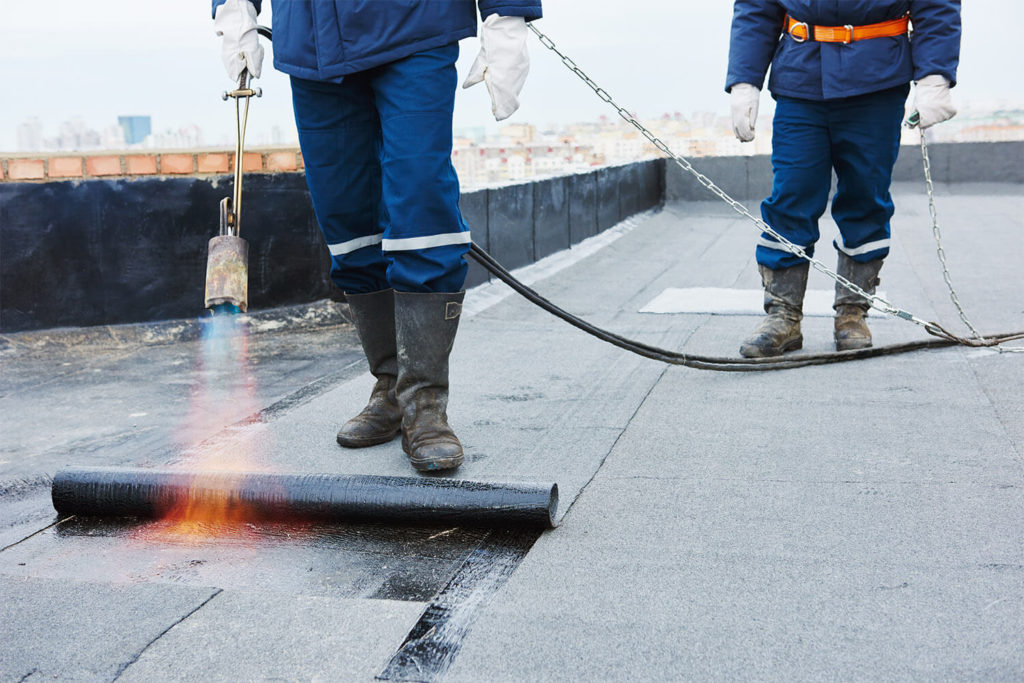
During the storm, you have one simple goal – to stay safe. All your decisions leading up to a storm, and during the storm itself, should be focused on keeping yourself and everyone else around you safe until the storm has moved through the area.
Once the threat from the storm has passed, you can start to focus on dealing with the aftermath and any damage that has been done. Toward that end, reach out to Lawton Construction & Restoration right away for assistance. We are experienced in every part of the disaster recovery process, and our professional team will be proud to serve you.
Who We Are
Lawton Construction & Restoration. Proudly serving in North California & Nevada since 1976.
Turnkey services: Emergency, Restoration, Content Care
All levels of complexity: Residential, Comercial, Industrial
Fast interaction with all insurance companies.
